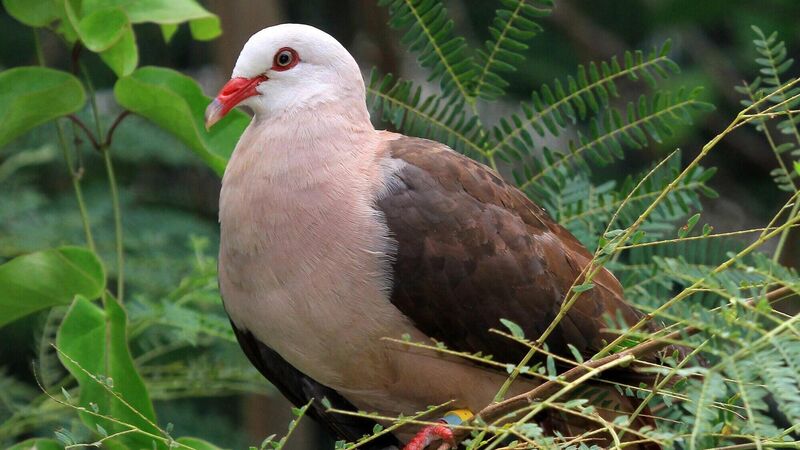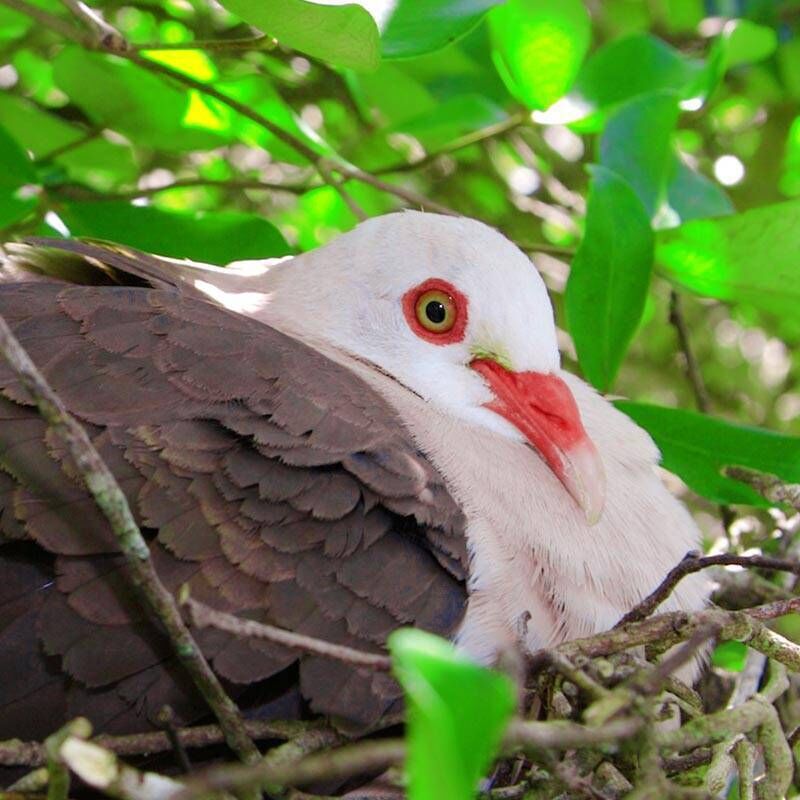With help, the pink pigeon may survive extinction

Pink Pigeon (Nesoenas mayeri). Picture: Mauritian-wildlife.org/projects
Visiting the Black River Gorge in Mauritius during the 1980s, I was shown a bird on the verge of extinction. Thankfully, it has survived: a last-ditch captive-breeding programme saved the critically-endangered pink pigeon.
With the tender loving care of the Durrell Wildlife Trust and the Mauritian Wildlife Foundation, this elegant pink-breasted bird was coaxed back from the brink. There are about 480 of these living wild in Mauritius today.
But there’s a problem. The authors of a paper, just published, warn that the wild population is becoming so in-bred that it may go to the wall if further measures aren’t taken.*
Although the adult birds will eat the odd creepy-crawly, pigeons and doves are vegetarians. Parents even feed their chicks on protein-rich baby 'milk' produced in their crops.
But life is unfair; these most docile of creatures have endured many trials and tribulations. According to the New Encyclopaedia of Birds, 11 of the world’s 309 pigeon species are listed as ‘extinct’, eight of them having disappeared since 1600. A further 14 species are ‘endangered’ and 34 are ‘vulnerable’.
Doves may symbolise peace and goodwill, and even represent the Holy Ghost in European art, but they have another, less happy, claim to fame. A species like the pink pigeon, which lived only in Mauritius, was driven into extinction in the 17th century, giving us the expression ‘as dead as the dodo’. The dodo’s close relative, the solitaire, which inhabited the nearby Indian Ocean island of Réunion, suffered a similar fate.
Read More
Other pigeon extinctions, some might argue, were the bird’s own fault. Raids on crops alienate farmers, while acid from bird droppings damages the stonework of buildings. Feeding the pigeons in Trafalgar Square used to be a treat for young and old alike, but the birds were banished to protect the architectural heritage.
The fate of an American species is particularly tragic. The passenger pigeon was one of the world’s most numerous birds, so abundant that its future seemed entirely secure. But over-exploitation for its meat and destruction of its habitat had catastrophic consequences. The last passenger pigeon died in Cincinnati Zoo in 1914.
‘The voice of the turtle dove has been heard in the land’ says the Song of Solomon, celebrating sexual love. Alas, the gentle purring call of this migrant is seldom heard nowadays in this part of the world. Turtle doves visit Ireland, especially Cork, in small numbers. They have bred, however, on only a handful of occasions.

There is little we can do to encourage turtle doves to visit, but schemes to ‘breed back’ the passenger pigeon have been mooted. They are a long shot, but help may be at hand for the pink pigeon.
Using birds living in European and American zoos, a ‘genetic rescue’ might be attempted. By releasing captive-bred individuals, which don’t carry the offending mutations, the gene pool might be cleansed.
There will be difficulties, the scientists admit. The wild pigeons, for example, may not breed with the blow-ins. But while ’there is many a slip twixt cup and lip’, ‘it is better to light a candle than to curse the darkness’.








